Abraham Lincoln Worksheets
Do you want to save dozens of hours in time? Get your evenings and weekends back? Be able to teach about Abraham Lincoln to your students?
Our worksheet bundle includes a fact file and printable worksheets and student activities. Perfect for both the classroom and homeschooling!
Resource Examples
Click any of the example images below to view a larger version.
Fact File
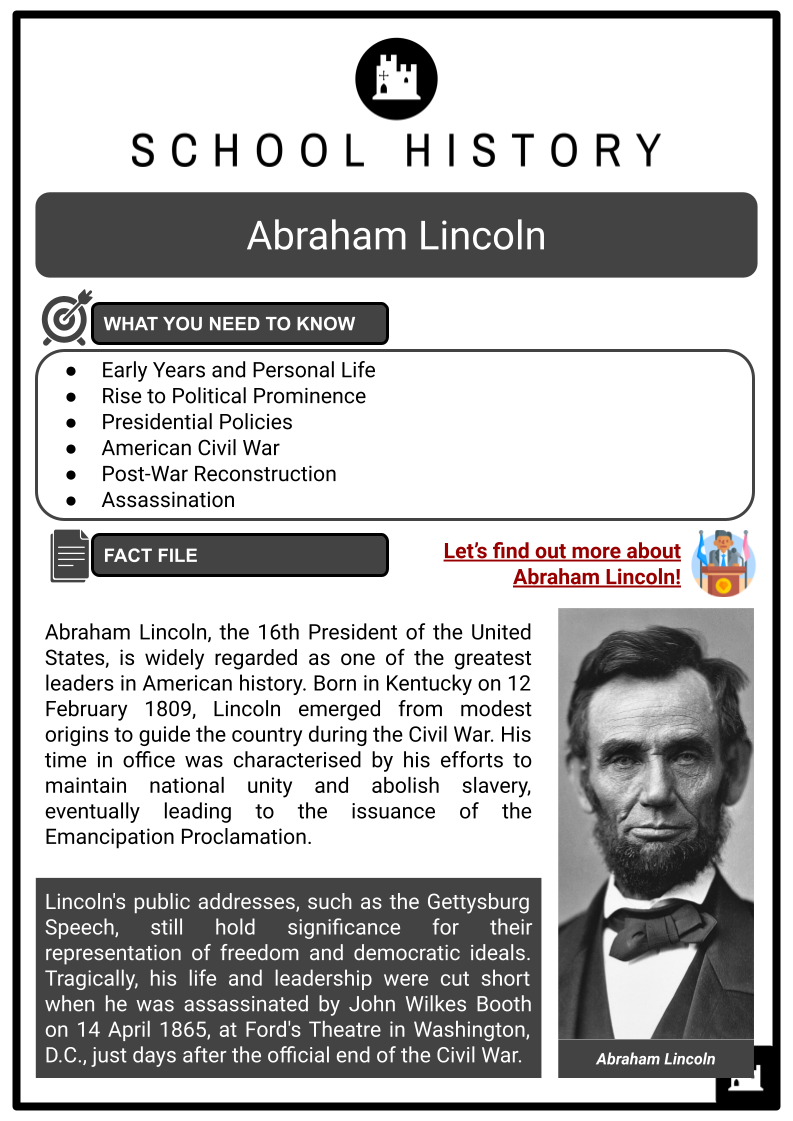
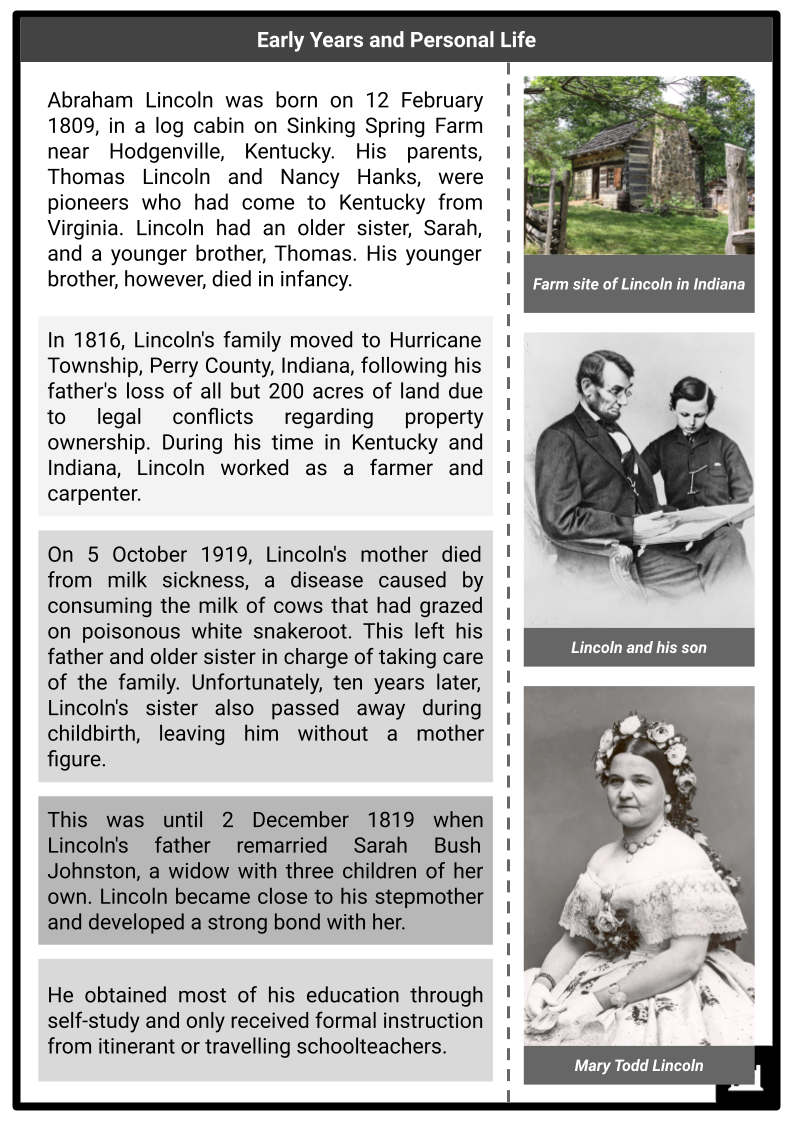
Student Activities
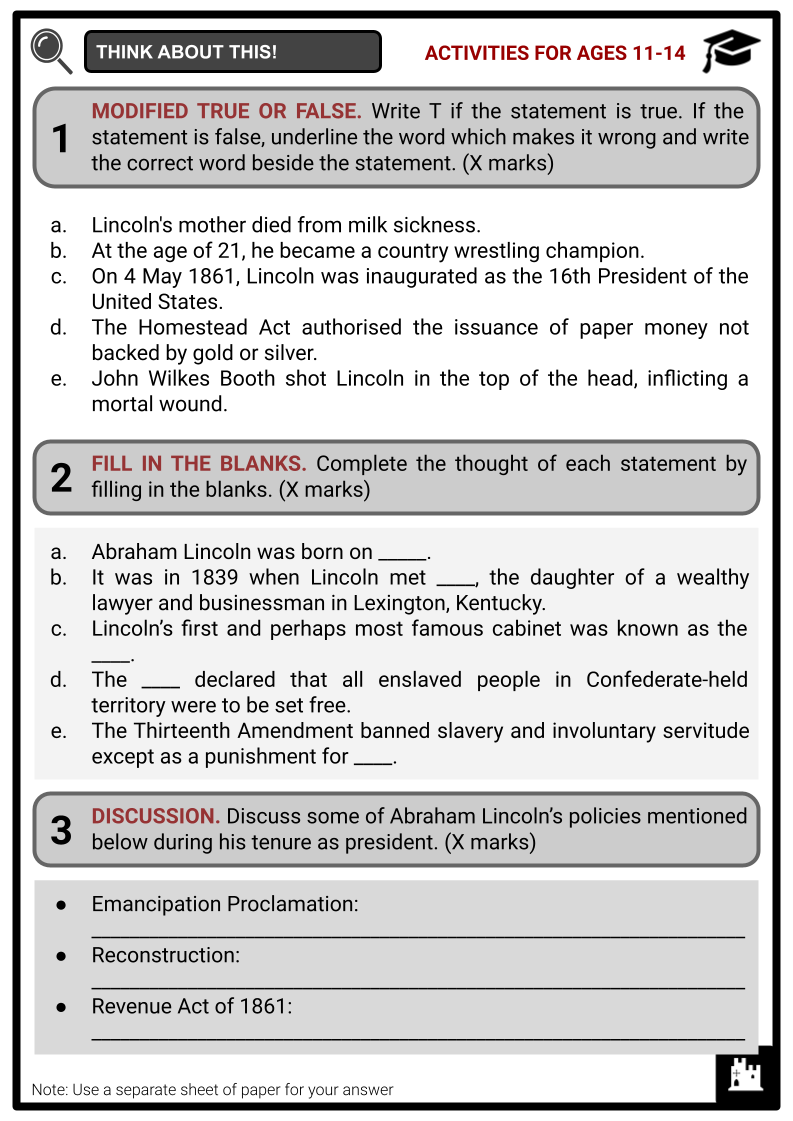
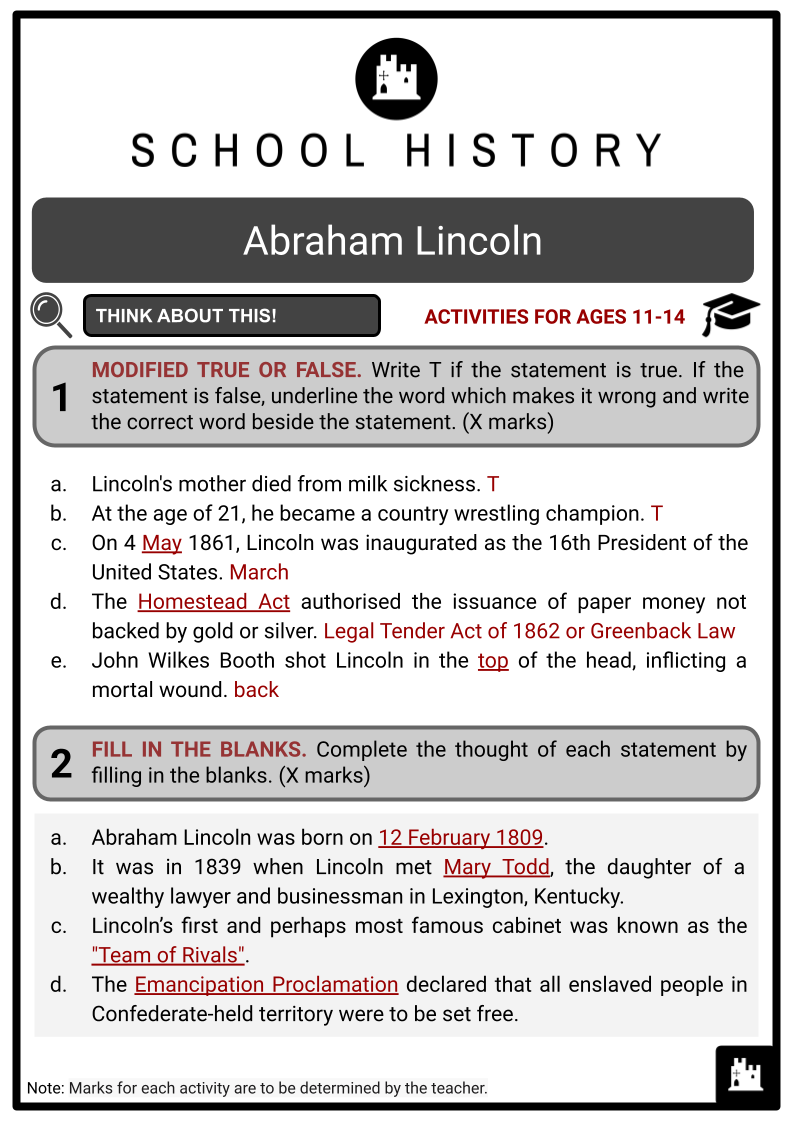
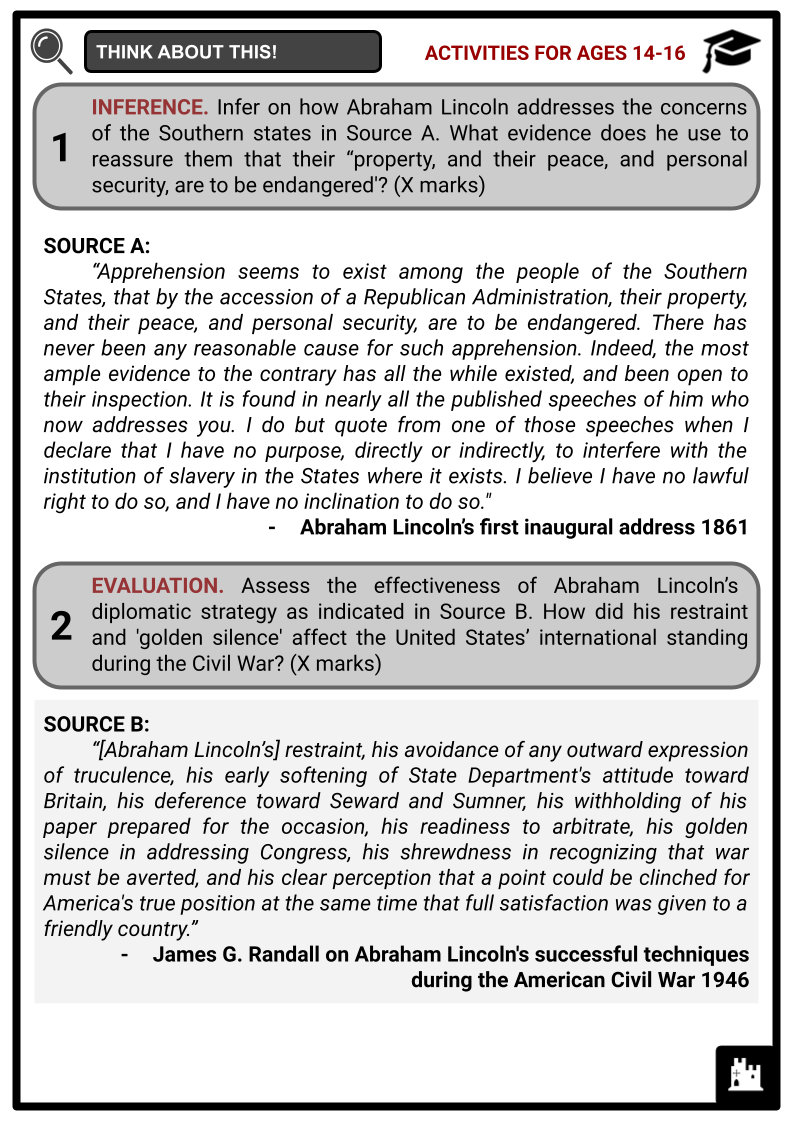
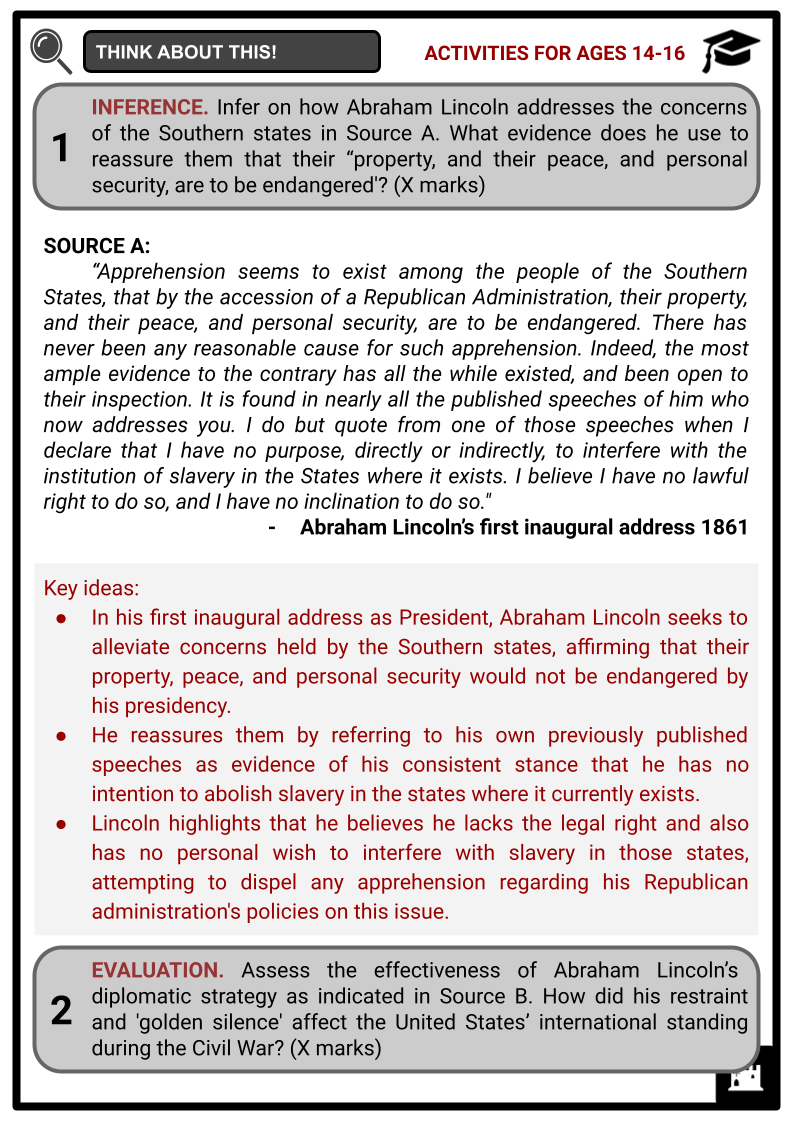
Summary
- Early Years and Personal Life
- Rise to Political Prominence
- Presidential Policies
- American Civil War
- Post-War Reconstruction
- Assassination
Key Facts And Information
Let’s find out more about Abraham Lincoln!
Abraham Lincoln, the 16th President of the United States, is widely regarded as one of the greatest leaders in American history. Born in Kentucky on 12 February 1809, Lincoln emerged from modest origins to guide the country during the Civil War. His time in office was characterised by his efforts to maintain national unity and abolish slavery, eventually leading to the issuance of the Emancipation Proclamation. Lincoln's public addresses, such as the Gettysburg Speech, still hold significance for their representation of freedom and democratic ideals. Tragically, his life and leadership were cut short when he was assassinated by John Wilkes Booth on 14 April 1865, at Ford's Theatre in Washington, D.C., just days after the official end of the Civil War.
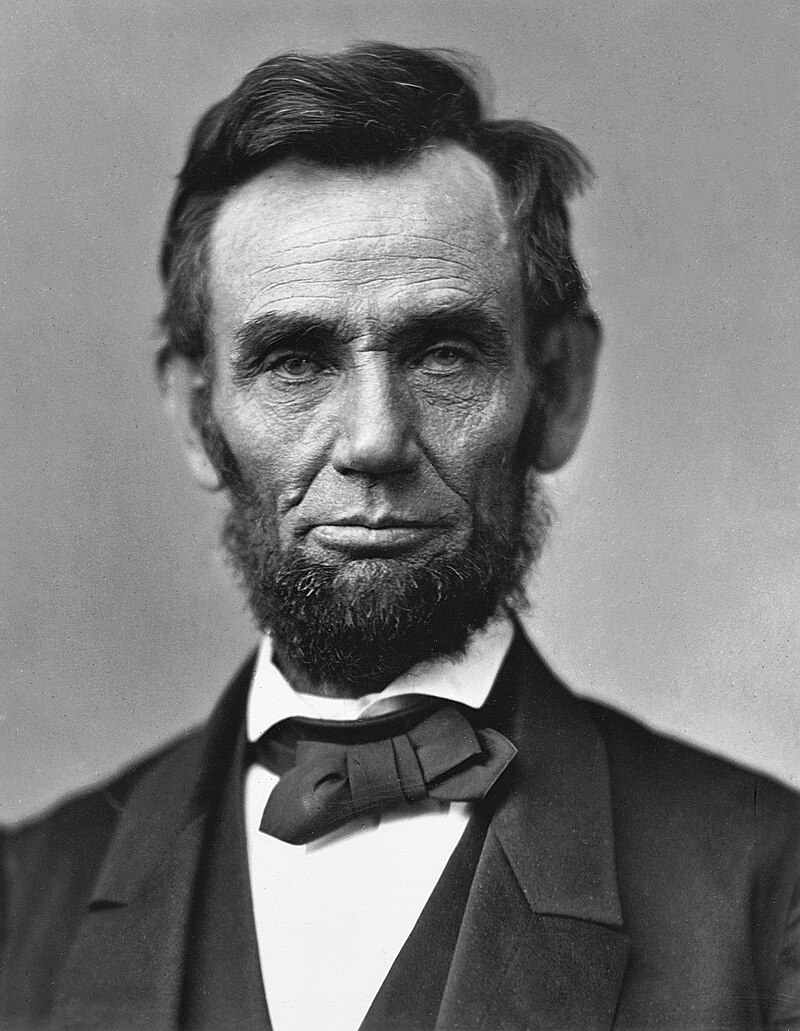
Early Years and Personal Life
- Abraham Lincoln was born on 12 February 1809, in a log cabin on Sinking Spring Farm near Hodgenville, Kentucky. His parents, Thomas Lincoln and Nancy Hanks, were pioneers who had come to Kentucky from Virginia. Lincoln had an older sister, Sarah, and a younger brother, Thomas. His younger brother, however, died in infancy.
- In 1816, Lincoln's family moved to Hurricane Township, Perry County, Indiana, following his father's loss of all but 200 acres of land due to legal conflicts regarding property ownership. During his time in Kentucky and Indiana, Lincoln worked as a farmer and carpenter.
- On 5 October 1919, Lincoln's mother died from milk sickness, a disease caused by consuming the milk of cows that had grazed on poisonous white snakeroot. This left his father and older sister in charge of taking care of the family. Unfortunately, ten years later, Lincoln's sister also passed away during childbirth, leaving him without a mother figure.
- This was until 2 December 1819 when Lincoln's father remarried Sarah Bush Johnston, a widow with three children of her own. Lincoln became close to his stepmother and developed a strong bond with her.
- He obtained most of his education through self-study and only received formal instruction from itinerant or travelling schoolteachers.
- Despite his lack of formal education, he was an avid reader and a self-learner. He had a keen interest in books and learning, often borrowing them from neighbours. Aside from his interest in learning, Lincoln was also known for his physical strength and skill as a wrestler. At the age of 21, he became a country wrestling champion. He also gained a reputation after defeating the famous leader of a group of troublemakers called the Clary's Grove boys in a wrestling match.
- In March 1830, Lincoln's extended family moved to Illinois and settled in Macon County to avoid a potential milk sickness outbreak. In 1831, while his father and other family members were preparing to move to Coles County, Illinois, Lincoln ventured out on his own and lived in New Salem for six years. During this time, he travelled by flatboat with friends to New Orleans, where he witnessed slavery for the first time.
- Speculation about Lincoln's first romantic interest in Ann Rutledge persists, but witness testimony from decades later lacks specific recollection of a romance between the two. Following Rutledge's death in 1835, Lincoln experienced a serious episode of depression, leading to speculation that he had been in love with her.
- Later, he met Mary Owens from Kentucky and agreed to a match if she returned to New Salem. However, both had second thoughts, and their courtship eventually ended without any reply from Owens after Lincoln expressed his understanding of her potential decision to end the relationship.
- It was in 1839 that Lincoln met Mary Todd, the daughter of a wealthy lawyer and businessman in Lexington, Kentucky. A year later, the two were engaged, and on 4 November 1842, the two married and had four sons: Robert Todd, Edward Baker, William Wallace, and Thomas. Only Robert Todd survived to adulthood. Lincoln is said to have been an affectionate husband and father. However, his work regularly kept him at home. The deaths of his sons Edward and William had a profound impact on him, resulting in his suffering from "melancholy" (now thought to be clinical depression). Later in life, as he became more distant from his family, his wife struggled mentally, and in 1875, their son Robert committed her to an asylum.
Rise to Political Prominence
1832
- Lincoln made his first foray into politics, running for the Illinois General Assembly, but was unsuccessful.
1837
- Lincoln's growing political reputation landed him the position of leader of the Whig minority in the state legislature.
1846
- Lincoln was elected to the U.S. House of Representatives and served one term, where he opposed the Mexican-American War and the extension of slavery into the new territories.
1854
- The Kansas-Nebraska Act, which repealed the Missouri Compromise and allowed for popular sovereignty to decide the issue of slavery, inspired Lincoln to re-enter politics and join the newly formed Republican Party.
1858
- In the Lincoln-Douglas debates, he debated against Stephen A. Douglas for the U.S. Senate seat from Illinois, gaining popularity for his articulate arguments against slavery.
1860
- Lincoln became the first Republican to win the presidency, despite not being on the ballot in most Southern states.
- His victory led to the secession of Southern states and the start of the Civil War.
Presidential Policies
- On 4 March 1861, Lincoln was inaugurated as the 16th President of the United States. His first inauguration took place at the East Portico of the United States Capitol in Washington, D.C. At the time, the country was on the brink of an impending crisis, with several Southern states having already seceded from the Union in response to his election.
- The secession was primarily driven by the Southern states' opposition to Lincoln's anti-slavery stance. They feared that his presidency would lead to the abolition of slavery, which was a crucial economic and social institution in the Southern states. In his inaugural address, Lincoln emphasised the preservation of the Union and appealed to the Southern states for reconciliation. He also reiterated his commitment to uphold the Constitution and the rule of law.
- As President, his first and perhaps most famous cabinet was known as the "Team of Rivals," a term coined by historian Doris Kearns Goodwin. This group included prominent figures who had run against him in the 1860 presidential election, reflecting Lincoln's commitment to unity and his belief in the importance of differing opinions.
- Abraham Lincoln’s Cabinet Members:
- William H. Seward - Secretary of State
- Salmon P. Chase - Secretary of the Treasury
- Edwin M. Stanton - Secretary of War
- Edward Bates - Attorney General
- Montgomery Blair - Postmaster General
- Gideon Welles - Secretary of the Navy
- Caleb B. Smith - Secretary of the Interior
- Lincoln also made several crucial US Supreme Court justices that have had a lasting impact on the country's legal system:
- Noah Swayne
- Samuel Freeman Miller
- Salmon P. Chase
- David Davis
- Stephen Johnson Field
- Lincoln's tenure as president lasted from 1861 until 1865. It was marked by several key policies and actions that left a lasting impact on the nation.
- Suspension of Habeas Corpus: During the Civil War, Lincoln controversially suspended habeas corpus, which is the right of an arrested individual to challenge the legality of their detention. This was done to suppress dissent and rebellion in border states and areas where Union loyalty was in question.
- Emancipation Proclamation: Lincoln's most significant presidential policy was the Emancipation Proclamation, issued on 1 January 1863. This proclamation declared that all enslaved people in Confederate-held territory were to be set free. While it did not immediately free all enslaved people, it fundamentally transformed the character of the Civil War and set the stage for the eventual abolition of slavery.
- Preservation of the Union: Throughout his presidency, Lincoln was unwavering in his dedication to preserving the Union. He believed that the United States was an indivisible entity, and he took numerous actions to ensure its unity, even in the face of secession and civil war.
- Reconstruction: Lincoln laid the initial groundwork for the Reconstruction era, which followed the Civil War. His Ten Percent Plan, which offered amnesty to Confederates who pledged loyalty to the Union and supported the emancipation of enslaved people, aimed to facilitate the reintegration of Southern states into the Union and provide a path for healing and reconciliation.
- Revenue Act of 1861: This act introduced the first US income tax as a measure to pay for the Civil War efforts. It levied a tax of 3% on annual incomes over $800 and was a precursor to the modern income tax system.
- Homestead Act: In 1862, Lincoln signed the Homestead Act, which granted 160 acres of public land to settlers who agreed to improve the land over a period of five years. This policy encouraged westward expansion, promoted agricultural development, and played a pivotal role in the settlement of the American West.
- Legal Tender Act of 1862: Also known as the Greenback Law, this act authorised the issuance of paper money not backed by gold or silver. These "greenbacks" were legal tender for all debts and helped fund the Union's war effort.
- Transcontinental Railroad: As part of his vision for national unity and economic development, Lincoln supported the construction of the First Transcontinental Railroad. The Pacific Railway Acts of 1862 and 1864, signed into law during his presidency, provided federal support for the expansion of the railroad, connecting the eastern and western parts of the country.
- Morrill Land-Grant Acts of 1862 and 1890: These acts provided federal land to states to finance higher education institutions focusing on agriculture, the mechanical arts, and military tactics, which led to the establishment of land-grant colleges and universities.
- National Banking Act of 1863: This act established a national banking system and a uniform national currency, helping to create a stable, centralised financial system in the US.
American Civil War
- On 20 December 1860, South Carolina called a state convention, which formally announced their secession from the Union due to the election of Lincoln. Between January and February 1861, the states of Mississippi, Florida, Georgia, Alabama, Louisiana, and Texas seceded. Following these Southern states were Virginia, Tennessee, Arkansas, and North Carolina. Early in February 1861, representatives met in Montgomery, Alabama, to draft their own constitution. Although Jefferson Davis was initially opposed to secession, he resigned from the US Senate after Mississippi seceded.
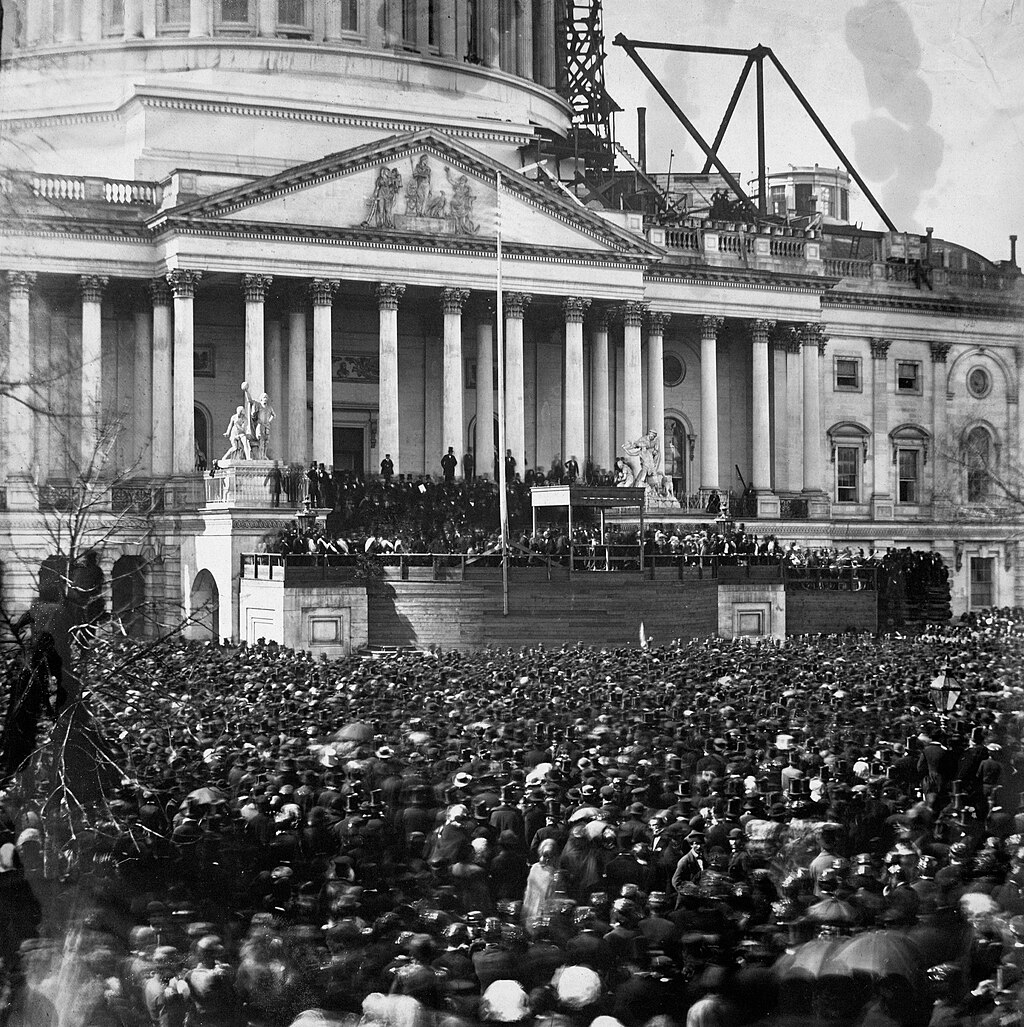
- By February 1861, he was appointed president of the Confederacy but faced difficulty keeping the new nation united. The American Civil War was a war fought from 1861 to 1865 to determine the survival of the Union or independence for the Confederacy.
- In late July 1962, Lincoln drafted a preliminary document of the Emancipation Proclamation, which some of his advisers supported. Others, however, were either apathetic or worried that the proclamation was too radical. It was then that Lincoln took the advice of William Seward, his secretary of state, who urged him to wait until a significant victory of the Union before announcing the emancipation.
- On 22 September, days after the Battle of Antietam in the Civil War, Lincoln announced the preliminary Emancipation Proclamation, which called on the Confederacy to join the Union within 100 days or else their enslaved people would be declared “thenceforward, and forever free”. This did not apply to the border states of Delaware, Maryland, Missouri, and Kentucky, however, since they did not join the Confederacy.
- The Battle of Antietam provided the necessary Union victory to issue the Emancipation Proclamation. On 1 January 1863, 100 days after the preliminary emancipation, no Confederate states yielded. Lincoln, to his word, signed the final Emancipation Proclamation. It changed the focus of the war from preserving the Union to the freedom of enslaved people.
- Effects of the Emancipation Proclamation:
- Being a war tactic, it ensured Union victory.
- Formerly enslaved were invited to serve in the Union army.
- It increased Union manpower.
- It paved the way for the formerly enslaved to fight for their freedom.
- It prevented European nations, who were against slavery but traded with the South, from aiding the Confederacy.
- The concept of freedom drove federal troops, which now included African-Americans motivated by the prospect of liberation.
- The war went on for four years of battles between the North (Union) and South (Confederacy), which eventually led to the victory of the Union.
- The reasons for the victory of the Union were:
- Many enslaved people in the South fled to the Union armies. The Union accepted them as soldiers.
- Compared to the agricultural South, the industrialised North produced its own firearms.
- The North had about 22 million people compared to 9 million Southerners, and most were enslaved people.
- There was a more experienced army in the north. Moreover, Confederate General Robert E. Lee’s series of war strategies led to high casualties.
- The Union was able to block any attempts by the Confederacy to trade with Europe, which was also engaged in abolition movements. Northern control gave the Yankees an advantage in supplies.
- On the afternoon of 19 November 1863, at the National Cemetery of Gettysburg, Pennsylvania President Abraham Lincoln delivered his famous speech, the Gettysburg Address, following the Union victory of the Civil War against the Confederacy during the Battle of Gettysburg.
- His carefully crafted speech became one of the most famous and influential speeches bearing American purpose. His speech contained only 272 words, but each word invoked the principles of human equality in the Declaration of Independence; each word evoked the sacrifices of the people with the desire for “a new birth of freedom”; and each word extolled the preservation of the Union.
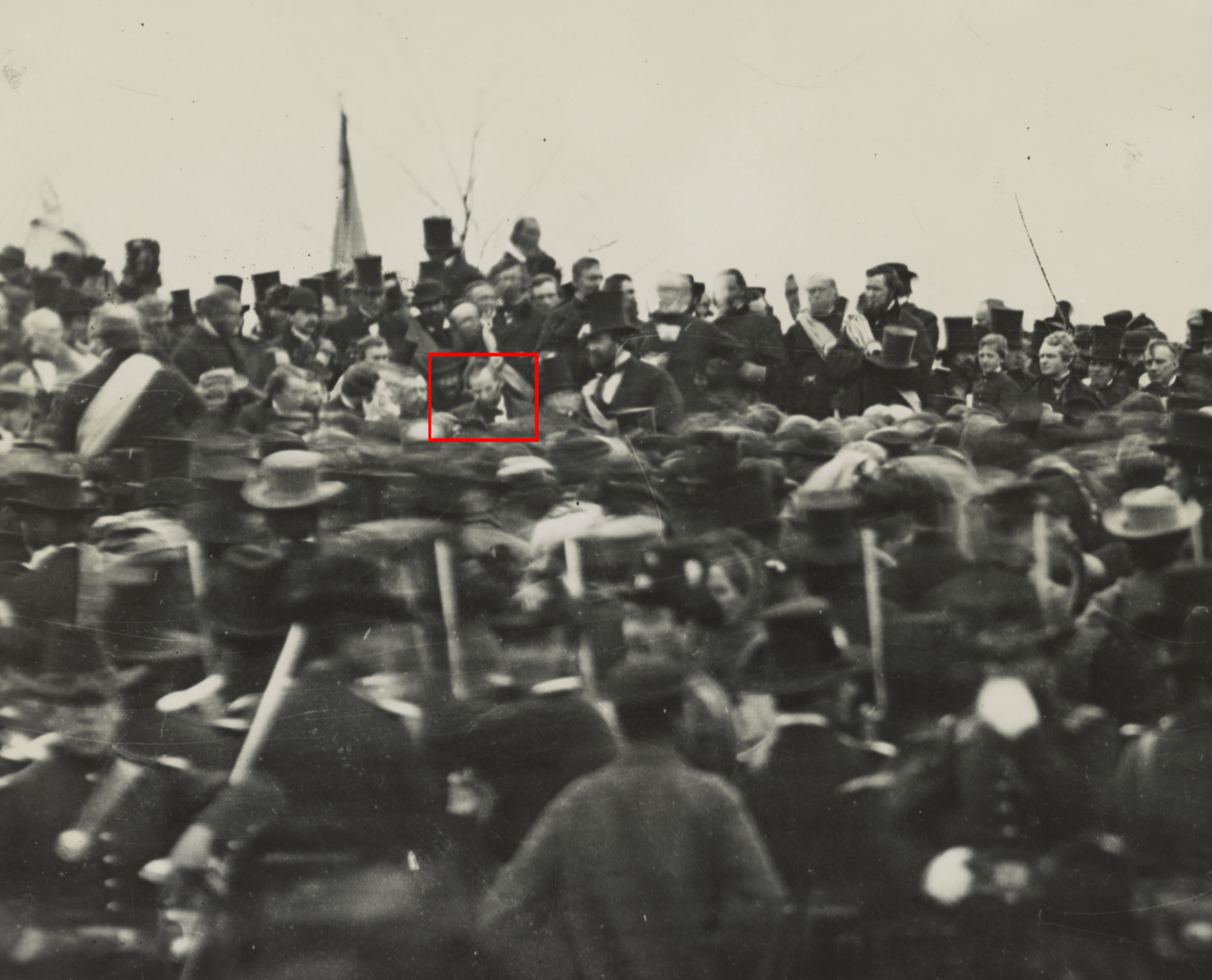
Post-War Reconstruction
- For Lincoln, separating the country into two nations was intolerable. His vision was not to punish the Southerners but rather to reorganise the Union, as he believed that the South had never legally seceded and therefore could only be forgiven.
- On 8 December 1863, Lincoln announced his reconstruction plan, formally called the Proclamation of Amnesty and Reconstruction, or Ten-Percent Plan. It was clear to Lincoln that he needed to make preliminary plans for post-war reconstruction.
- In it, he addressed 3 main areas of concern:
- Allowed restoration of property to those who engaged in the rebellion (except the highest Confederate officials and military leaders)
- Allowed for a new state government to be formed in the Southern states only if 10 percent of eligible voters took an oath of allegiance to the United States
- States were encouraged to enact plans on the subject of formerly enslaved as long as the enslaved people’s freedom was not compromised
- After the Civil War, the Reconstruction era followed. This was a turbulent era that occurred in the United States from 1865 to 1877 and was an attempt by the US to rebuild the Union and provide freedom and equality to African-Americans through Constitutional Amendments and Reconstruction Acts. Though there were good intentions, the era was marked by intense controversies.
- In April 1864, the US Senate passed the 13th Amendment with the required two-thirds majority vote. In the House of Representatives, the Democrats thought that the amendment would undermine the sovereignty of the states and therefore did not pass it. Congress was adjourned in July 1864, leaving the matter pending.
- Lincoln won the elections owing to his popularity for winning critical battles during the war, and the states that had ceded to the Union did not participate in the polls. After the elections, Lincoln advocated for the amendment until January 1865, when it was passed by a vote of 119–56, achieving the two-thirds majority requirement. By the end of 1865, all Northern states had ratified the amendment, as had most of the “reconstructed” Southern states.
- The Thirteenth Amendment banned slavery and involuntary servitude except as punishment for crime. The Amendment also gave Congress the power to pass legislation to support its implementation. The Amendment significantly advanced the cause of abolitionists and was significant in alleviating the human rights violations blacks were facing. However, racial discrimination was still rampant in the US, even after its ratification.
Assassination
- On 14 April 1865, just five days after General Robert E. Lee's surrender effectively ended the Civil War, President Lincoln was assassinated. The assassination took place at Ford's Theatre in Washington, D.C., where Lincoln was attending a play.
- The assassin, John Wilkes Booth, was a Confederate sympathiser. Booth shot Lincoln in the back of the head, inflicting a mortal wound. The president was carried across the street to Petersen House, where he died the next morning after remaining in a coma for 8 hours. He became the first US president to be assassinated.
- Two weeks later, Booth, who refused to give himself up, was located at a farm in Virginia. He sustained a fatal gunshot wound from Sergeant Boston Corbett and passed away on 26 April. Despite Secretary of War Stanton's orders to capture Booth alive, Corbett initially faced arrest for court martial proceedings. After a brief interrogation, Stanton cleared him of any wrongdoing, recognising him as a patriot and dropping the charges.
- The late President's body lay in state at the White House and then at the Capitol Rotunda before being transported on a funeral train to Springfield, Illinois. The train made stops for memorials in various cities, drawing hundreds of thousands of mourners. Poet Walt Whitman composed "When Lilacs Last in the Dooryard Bloom'd" as a eulogy for Lincoln. African Americans were deeply affected by his death, and many others grieved over the loss of so many men in the war. Lincoln was buried at Oak Ridge Cemetery and now rests in the Lincoln Tomb.
- The assassination of Lincoln had significant implications for the post-war period and the process of reconstruction. The death of Lincoln meant that the reconstruction plans would be handled by his successor, Vice President Andrew Johnson, whose approach differed significantly from Lincoln's. Johnson's policies were more lenient towards the former Confederate states, leading to conflicts with the Radical Republicans and impeding the progress of Reconstruction. The years following Lincoln's assassination were marked by political turmoil and struggles over the direction of the reconstruction process.
Image Sources
- https://upload.wikimedia.org/wikipedia/commons/thumb/a/ab/Abraham_Lincoln_O-77_matte_collodion_print.jpg/800px-Abraham_Lincoln_O-77_matte_collodion_print.jpg
- https://upload.wikimedia.org/wikipedia/commons/thumb/b/b2/Abraham_Lincoln_inauguration_1861.jpg/1024px-Abraham_Lincoln_inauguration_1861.jpg
- https://upload.wikimedia.org/wikipedia/commons/thumb/0/05/Lincoln%27s_Gettysburg_Address%2C_Gettysburg%2C_highlighted_version.png/1280px-Lincoln%27s_Gettysburg_Address%2C_Gettysburg%2C_highlighted_version.png
Frequently Asked Questions
- What is Abraham Lincoln most famous for?
Lincoln is most famous for being the 16th President of the United States, leading the country through the American Civil War, and issuing the Emancipation Proclamation, which declared the freedom of all enslaved individuals in Confederate-held territory.
- What were Abraham Lincoln's views on slavery?
Lincoln's stance on slavery was not static. He initially opposed its expansion into new territories and states, but his views evolved over time. This evolution culminated in his decision to issue the Emancipation Proclamation during the American Civil War.
- How did Abraham Lincoln die?
Abraham Lincoln was assassinated by John Wilkes Booth on 14 April 1865 while attending a play at Ford's Theatre in Washington, D.C. He died the following day.
